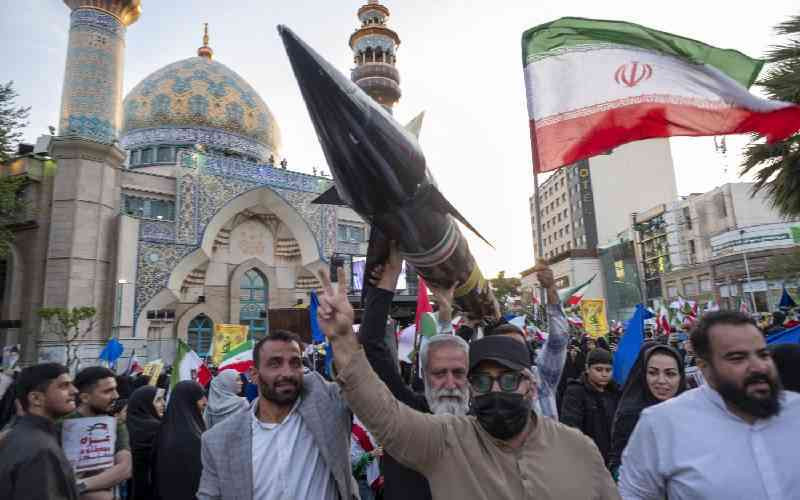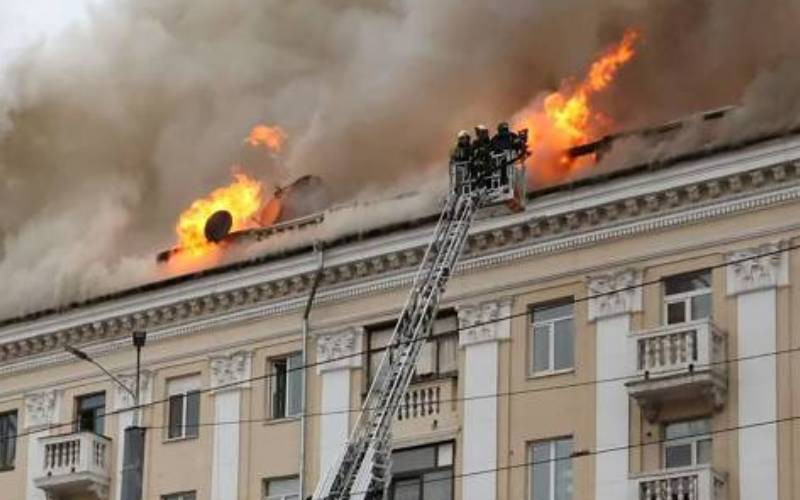
Garissa County: On the morning of Thursday, September 18, gunmen attacked a group of men who were unloading potatoes from a bus outside the City to City Bus Services booking offices along Posta Road in Garissa County.
The unidentified gunmen killed one of the men and wounded two. That incident was the latest in a series of unexplained attacks in the town, which some observers now fear are taking ethnic dimensions.
Protests over the attack resulted in a tense stand-off, after rival sections of Somali and non-Somali youth started hurling stones at one another.
Over the past four years, Garissa County has borne the brunt of a wave of terror attacks and mysterious killings that have claimed dozens of lives and damaged property.
A recent survey done by The Standard on Sunday of the terror attacks suffered in Kenya since 2011 indicates that 34 per cent of the strikes have occurred in Garissa County.
The frequency and the targets of the recent attacks have left many non-Somali’s fearing that an insidious plan is afoot to violently kick them out of the town.
On the evening of August 14, at around 7.30 o’clock, Peter Mwenda, 35, and John Musili Nzioka, 28, were shot dead outside their house in Garissa Ndogo, a residential area on the outskirts of Garissa Town.
The duo had been shopping — Mwenda to buy a cellphone airtime and Nzioka to buy vegetables for supper — when two men on a motorcycle materialised out of the night and shot them dead.
The two were casual labourers and had just returned from their day’s works when their lives were snuffed out prematurely.
A week after this attack, two non-local teachers, Victor Ochieng and Kileon Airo, were also shot dead at night by unknown gunmen around the same area.
“Whatever we may call it, there seems to be a deliberate attempt to drive out people who are not from the Somali community from this area,” says Tom Njuguna, a resident of Garissa Ndogo, and who knew Nzioka.
“We know it, but nobody wants to accept this truth. There is silent discrimination that goes on here. The locals refer to us as ‘nywele ngumu’ (kinky hair). Often, it is used derogatorily, and this has fed many stereotypes about outsiders.”
The police bosses do not see it that way though.
“If you investigate these incidents properly, you will find that there were other issues behind these attacks beyond what people are saying. There could be personal issues,” says Musa Yego, the North Eastern regional Criminal Investigations Department (CID) coordinator.
Stay informed. Subscribe to our newsletter
Yego says his team is pursuing three men believed to be behind the attacks. Although the motive of the attacks remains unknown, the trio is said to be made up of gunmen for hire.
The high levels of insecurity in Garissa, once known as the safest town in Kenya, has been blamed on a cocktail of factors, the main one being Al Shabaab’s heavy footprint in the town.
The smuggling cartels that operate from the town and often employ extreme methods to protect their routes have also been apportioned some of the blame for the violence.
Recently, the town became the setting of a vicious war of attrition that claimed several lives as the Ethiopian government battled one of that country’s rebel forces, the Ogaden National Liberation Front, ONLF.
But it is the fear that some people in the town are slowly employing crude and lethal tactics to kick out ‘foreigners’ that have had the non-Somalis in the county doubly worried.
Garissa Town, where most of these incidences have occurred, sits on the border of Garissa County and Tana River County. The town’s centre is a walking distance from the Garissa-Tana bridge that marks the boundary between the two counties.
However, quite curiously, there have been no shooting incidences on the Tana River County side, although the area has also been traditionally inhabited by people of Somali ethnicity, as is Garissa town.
“If it was a war waged by Islamists against Christians, then they would have attacked people across the bridge in Tana River as well as those in Garissa. But why are these incidents confined to Garissa?” poses Paul Makau, who works in Garissa.
Fearing for their lives, a good number of ‘foreigners’, most of them casual labourers’, have left their rented houses on the Garissa side,opting to live on the Tana River side of the border, at Mororo.
Mororo is a small but lively town on the banks of River Tana in Tana River County, close to the bridge.
Makau move here from Garissa Ndogo, fearing for his safety, after two of his friends were shot in broad daylight outside a salon in October, last year.
Every morning and evening, the hundreds of people crossing the Tana bridge to and from their work stations in Garissa County create quite a spectacle.
Garissa Town has witnessed an economic boom lately. This boom has attracted workers from far afield, especially from the neighbouring Ukambani region.
Lose focus
Most of the newcomers are employed as casual labourers in construction sites or as loaders for trucks.
Some have taken up hawking and other forms of small scale businesses— the type of businesses said to be shunned by the locals. This has created competition and is said to have ultimately led to ethnic tensions.
One local leader who spoke on condition of anonymity due to the sensitivity of the matter said the growing number of ‘foreigners’ in the town has created the real fear that the numbers of these non-locals could in the end grow big enough to challenge for at least a civic seat in future elections.
“I will be very hesitant to call it ethnic cleansing,” says Yego. “If you do that, you will be creating tensions where there should be none. That is unnecessary. We are dealing with these incidents as ‘normal crime’ because if we do otherwise, we shall lose focus.”Garissa County spokesman Abdikadir Sugow shares these sentiments: “There is no policy of discriminating against a section of Kenyans in this town. Our governor (Nathif Jama) was voted in by Kenyans from all tribes and all religions. This town belongs to us all.”
 The Standard Group Plc is a
multi-media organization with investments in media platforms spanning newspaper
print operations, television, radio broadcasting, digital and online services. The
Standard Group is recognized as a leading multi-media house in Kenya with a key
influence in matters of national and international interest.
The Standard Group Plc is a
multi-media organization with investments in media platforms spanning newspaper
print operations, television, radio broadcasting, digital and online services. The
Standard Group is recognized as a leading multi-media house in Kenya with a key
influence in matters of national and international interest.
 The Standard Group Plc is a
multi-media organization with investments in media platforms spanning newspaper
print operations, television, radio broadcasting, digital and online services. The
Standard Group is recognized as a leading multi-media house in Kenya with a key
influence in matters of national and international interest.
The Standard Group Plc is a
multi-media organization with investments in media platforms spanning newspaper
print operations, television, radio broadcasting, digital and online services. The
Standard Group is recognized as a leading multi-media house in Kenya with a key
influence in matters of national and international interest.









